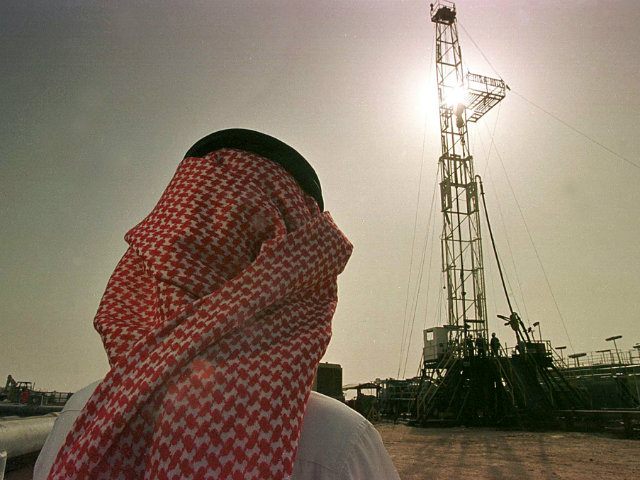Fearing a flood of crude oil when the Iran sanctions are lifted in the next few months, Saudi Arabia is pumping an extra 1.5 million barrels a day and signing long-term export contracts at low prices in a desperate effort to grab cash flow and avoid bankruptcy.
With the December 28 departure of the Russian transport ship Mikhail Dudin, carrying the Iran’s 25,000-pound inventory of enriched uranium, the Western economic sanctions against the Islamic State regime were essentially over.
U.S. Secretary of State John Kerry wrote on his official website, “The shipment included the removal of all of Iran’s nuclear material enriched to 20 percent that was not already in the form of fabricated fuel plates for the Tehran Research Reactor.”
The end of sanctions is an existential threat to Saudi Arabia’s monarchy. With a population that has grown from 6 million in 1972 to about 31 million today, the Kingdom’s residents enjoy an elite standard of living due to government handouts.
Saudi citizens tend to lack employable skills and are culturally not inclined to work. Of the 5.5 million that officially do have jobs, 4 million work directly for the government. The small private sector tends to employ only foreign workers.
From 1972 to 2001, the price of Saudi Arabian crude oil fluctuated around $20 per barrel. But after the September 11, 2001 terrorist attacks, the average price of Saudi crude moved up to an average of about $63 a barrel, and then $102 from 2011-2014.
To buy loyalty, the 15,000-member royal family implemented a vast set of social welfare entitlements and product subsidies. As a result of the spectacular rise in the oil price, Saudi Arabia’s oil and natural gas sector makes up 45 percent of the nation’s GDP, fund about 80 of the government’s budget, and account for 90 percent of all exports.
Annual subsidies for oil and gas have been costing the kingdom around $61 billion and another $10 billion for subsidized electricity and water.
With a budget of $294.3 billion in 2014, the nation suffered a $14.4 billion deficit, about 5 percent of GDP. But with spending relatively unchanged and the price of crude oil falling from over $100 to an average of $49 a barrel in 2015, the kingdom’s deficit ballooned to $98 billion, about a 33 percent deficit.
Saudi Arabia announced that it expects to spend only $224 billion in 2016, in order to cut the deficit to $87 billion. But that assumes that subsidy cuts of $15 billion, which will cause gasoline prices to jump 50 percent and utility rates to spike upwards, will not stir public rebellion.
Real savings are only possible if the kingdom slashes its $81 billion military budget, which is the planet’s third largest and consumes the world’s largest share of GDP, at 28 percent. But with Saudi Arabia sponsoring wars in Yemen and Syria, and beheading a religious cleric this week to retaliate against Shiite dissent in Bahrain and the oil-rich eastern Saudi provinces, slashing military spending would seem almost suicidal.
The worldwide excess supply of crude oil is supposedly about 2 million barrels a day. But Russian Energy Minister Alexander Novak said last week that Saudi Arabia had actually increased its crude oil production by 1.5 million barrels per day.
Saudi Arabia is obviously trying to pocket as much cash as possible before sanctions are lifted and Iran floods the market with 30-50 million barrels in storage.
Saudi oil minister Ali al-Naimi told the Wall Street Journal the day after Iran apparently complied with shipping out its enriched uranium, “We will satisfy the demand of our customers. We no longer limit production. If there is demand, we will respond. We have the capacity to respond to demand.”
Saudi Arabia’s $750 billion foreign currency reserves officially fell by $115 billion to $635 billion over the last 15 months, according to the International Monetary Fund. At that rate, the IMF predicted that Saudi Arabia would be bankrupt by 2020.
But Breitbart News estimates that with crude oil prices under $40 a barrel, Saudi Arabia’s foreign exchange reserves had dropped to $623 billion at year end, and are falling at an annual rate of about $150 billion per year. Given that the kingdom needs at least $250 billion to continue to run the oil business, Saudi Arabia will be bankrupt in three years.
Saudi Arabia understands that low oil prices are savaging the economies of the other members of the OPEC cartel and hurting Russia. But the kingdom is desperate to maximize its own oil sales in a desperate effort to remain solvent.
